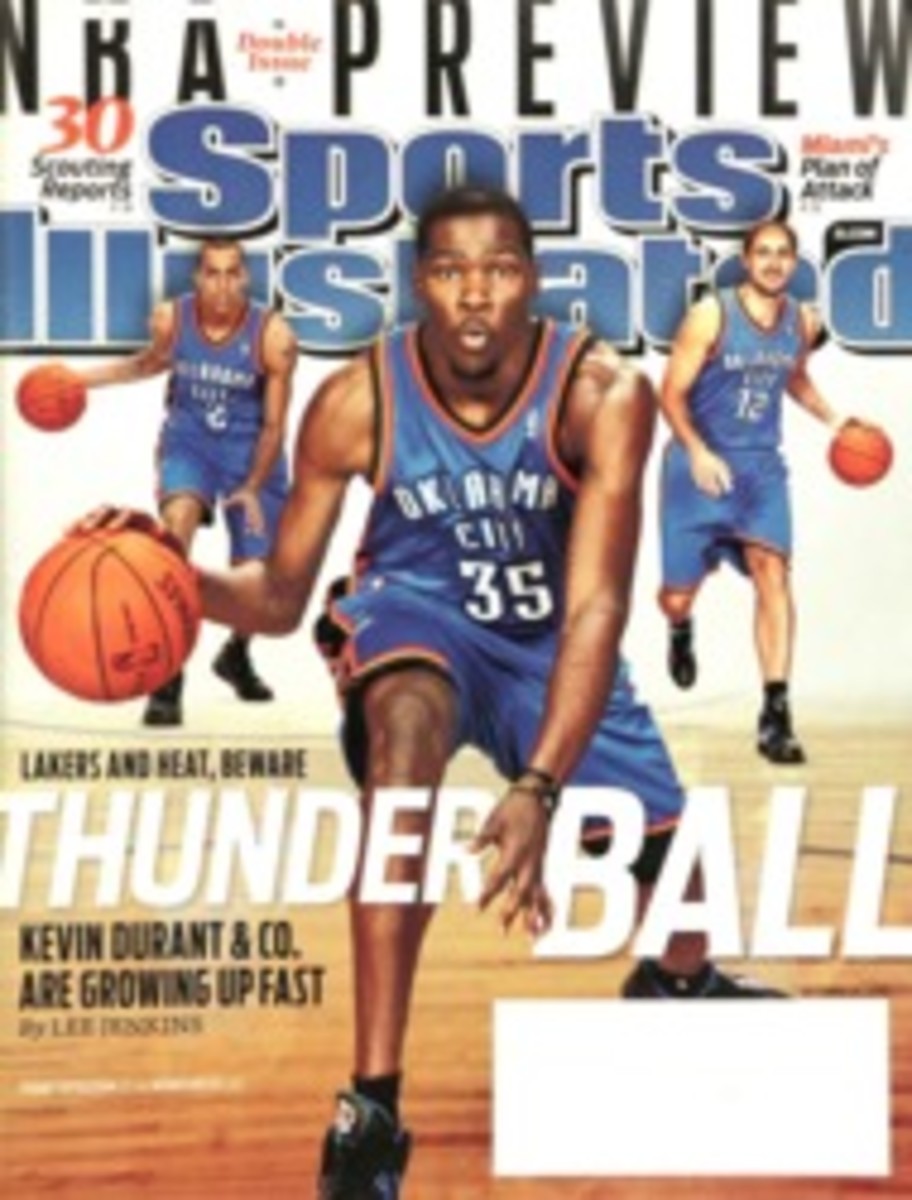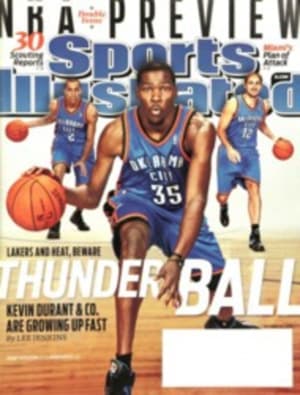
You Can Win For Losing
Travel down a road where nuns have come to embrace a fall habit that has delivered no evil. Take a left at a farm in Paxton, Mass., and, in a clearing beside wind-rattled trees that still clung to their colors last Saturday, witness perhaps the most seamless handoff in college football. It unfolded at halftime of a game between the home Anna Maria College Amcats and the Castleton (Vt.) State Spartans: As the Amcats trotted off the field, freshman linebacker Quincy Thomas stopped at the back of the end zone and handed athletic director David Shea his helmet in exchange for a brass horn. Then, while his teammates rested in a "locker room" that, for now, consists of a tree, a trailer and a portable toilet, Thomas hustled to his spot at midfield with the 40-member marching band. For the next 15 minutes the linebacker, still wearing his cleats, pads and black number 92 jersey, was simply a music major gaining a class credit.
Football and higher education can coexist on a college campus. This was the promise that incoming president Jack Calareso made in 2007 when he pitched Division III football to the board of a small Catholic school built by the Sisters of Saint Anne, who drove tractors to help clear the land for its vanilla-brick buildings in the 1950s. "The school has been coed since 1973, but there was still a perception that it was an all-women's school," says Calareso. Football, he vowed, would provide AMC with a new identity and lift its profile. Football would create new revenue streams: Adding 70 recruits at a tuition rate of $38,406 (Division III schools do not offer athletic scholarships) could mean as much as $2.6 million in extra income. Football, finally, would galvanize alumni without making faculty members chew through their No. 2 pencils at the perks the sport receives in pursuit of No. 1.
"Almost everyone was on board," Calareso recalls. There was one holdout: Sister Yvette Bellerose, the chairman of the school's board of trustees, who graduated from Anna Maria in 1972, the year before it went coed. "It was something like, 'Over my dead body,' but in a more polite way," says Calareso with a smile.
What can fill a skeptic with faith? Maybe seeing is believing. In addition to a new field (also home to the school's soccer and lacrosse teams) outfitted with a press box, aluminum bleachers for 1,200 fans and the same artificial turf the New England Patriots win on, there is a 5,437-square-foot fitness center, built to woo recruits but open at all times to any student or staffer. Maybe it's 45-year-old head coach Marc Klaiman, who is right where he wants to be after a career as a Division II assistant in the Northeast. AMC isn't a way station on an ambitious path to somewhere bigger; this was Klaiman's dream job from a daunting Day One. "I looked in the equipment room [in March 2008], and all I found was a kicking tee. I still have it." It was a start. He has remained wide-eyed at an age when a coach's excitement can get snuffed out by pressure, the fun drained by expectations. On May 14, 2009, the grounds crew rolled a 15-by-15-yard image of the team mascot—a tooth-baring blue-eyed cat—onto the midfield turf. "I walked around on it at 11 that night," Klaiman says. "I thought, This is unbelievable."
What other proof do the naysayers need? Nii Quartey is a junior defensive back who was on the Amcats' first roster, in 2008, a year before their first game. "I can remember when we practiced on a baseball field," he says. "We've come a long way. Back then the campus just emptied out on fall weekends. No one had a reason to stay."
On Sept. 12, 2009, before the first football game at AMC—Amcats versus Fitchburg (Mass.) State—tailgaters flooded a field where there still is no admission or parking fee, and hot dogs cost $2. As Calareso stood on the turf for the opening ceremony, the scene was just as he had imagined it. "Sister Yvette was next to me and took the microphone," he says. "I didn't know what she was going to say." Wearing the school colors (a red jacket and black pants), Sister Yvette proudly noted several Anna Maria milestones, including the school's largest freshman class. Then she surprised everyone with a quote on community values from, of all people, Vince Lombardi: "Individual commitment to a group effort—that is what makes a team work, a company work, a society work, a civilization work."
Sister Yvette wasn't done yet. "Anyone who knows me knows I can't get up here and express much football eloquence," she told the audience. "But Anna Maria, and Fitchburg State, in case you lose this game, memorize this Vince Lombardi quote now: 'We didn't lose the game, we just ran out of time.' "
Well, the clock beat the Amcats again on Saturday—they lost 49--35 to Castleton State, whose team is also in its second year—and left them 0 for the program. No wins in nine games in 2009 and none in seven so far in 2010. "It'll happen," Calareso said of victory, while members of the student government sold the Amcats' first foam paws, for $1. "But it's not everything." Indeed, the bleachers are packed for every home game, AMC scores have begun to appear in The Boston Globe, and, not coincidentally, says Calareso, enrollment has increased from 1,100 to 1,600. If the Amcats can maintain this innocent version of college football and stay comfortable in their Division III skin, they can beat the devil out of the sport.
Talk Back
If you want to comment on Point After or suggest a topic, send an e-mail to PointAfter@si.timeinc.com.
Football, says Anna Maria's president, doesn't have to make faculty chew through No. 2 pencils at the perks the sport gets to pursue No. 1.
PHOTO
JOHN BURGESS

